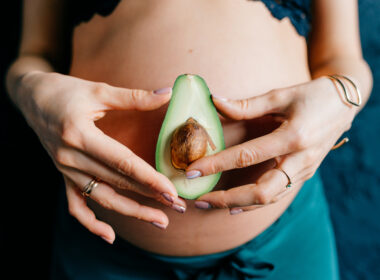“How on earth would birth control help manage diabetes? I’m not an expert, but I’m pretty sure those two things don’t go together.”
This comment was recently posted in an online parenting group I belong to.
A woman had asked whether she should follow her doctor’s recommendation to put her teen daughter on birth control to hopefully regulate symptoms associated with Type 1 Diabetes. This mother had reservations about that suggestion, and turned to the group for help. This wasn’t a group specifically about diabetes, but the question elicited numerous comments like the one I featured above.
Most women are in the dark about how the menstrual cycle affects metabolism and blood sugar
As I read through all of the comments on the diabetes/birth control post, what became apparent to me is the same thing I encounter time and time again in the Type 1 Diabetes groups which I joined after my daughter was diagnosed with T1D last year. The fact of the matter is: most women are completely unaware of the role that our cyclical hormones can play in our metabolism and in insulin resistance [1]. This is especially true for girls and women with diabetes.
For Type 1 Diabetics, studies have shown that about half of women experience elevated blood glucose levels in the days following ovulation [2], suggesting that cycle phases should be taken into account when figuring out proper blood sugar management [3].
Since receiving my daughter’s diagnosis and seeing how many desperate parents do turn to birth control to help with their daughter’s insulin management, I’ve now become “that period lady” in some of these groups– encouraging mothers to help their daughters learn how to chart their cycles and work with their body’s natural hormones, instead of overriding them and eliminating their cycles altogether. It’s a very niche corner of the internet where my certification and experience as a Natural Family Planning instructor, teen cycle educator, and mom to a T1D warrior all collide.
The intersection of Type 1 Diabetes and the menstrual cycle
What I’d like to offer now is some basic guidance for parents of girls who may be experiencing the acute challenges of T1D blood sugar management and teen cycles. My hope is that it will help you make informed decisions for your family in light of the fact that most providers do tend to counsel towards birth control as an option for these girls.
Type 1 Diabetes is an autoimmune disorder
Type 1 Diabetes is an autoimmune condition in which the body attacks and effectively destroys otherwise healthy islet cells within the pancreas. Without islet cells, the pancreas is unable to produce insulin to assist with blood sugar management. As a result, individuals with Type 1 Diabetes are necessarily insulin-dependent and require regular doses of insulin to avoid the build-up of unprocessed sugars in the bloodstream that eventually contribute to diabetic ketoacidosis (DKA). But, as every T1D knows, finding the right dosage of insulin for proper management can be very complicated!
Maintaining healthy blood sugar levels with Type 1 Diabetes require a two-pronged approach
Maintaining relatively healthy blood sugar levels as a Type 1 Diabetic requires navigating two primary concepts: delivering accurate boluses (insulin doses) to cover meals and establishing appropriate baseline levels of “background” –or basal– insulin. If a diabetic is using multiple daily injections (MDI), they will usually have a mix of long-acting and short-acting insulin shots delivered at different times of day. For individuals using a pump or a pod, background delivery of insulin is achieved through micro-doses throughout the day which are coupled with larger doses to cover meals.
How the menstrual cycle impacts blood sugar balance
The menstrual cycle can be understood in terms of two ovarian phases: the follicular phase (when an egg is maturing prior to ovulation), and the luteal phase (after the egg has been released at ovulation) [4]. During the follicular phase, estrogen is the primary hormone being produced in response to the maturing egg follicle. After ovulation, progesterone is the primary hormone being produced by the now-empty follicle (called the corpus luteum). As stated above, girls and women can experience varying levels of metabolic activity and insulin sensitivity during different cycle phases. This means that naturally cycling girls and women (i.e., those not on birth control) cannot always maintain consistent basal insulin rates, or carb ratios and correction factors. Instead, they will need to make adjustments any time they experience major hormonal shifts throughout the cycle.
Naturally cycling girls and women (i.e., those not on birth control) cannot always maintain consistent basal insulin rates, or carb ratios and correction factors. Instead, they will need to make adjustments any time they experience major hormonal shifts throughout the cycle.
It might be simpler to put teens with Type 1 Diabetes on birth control, but is it healthier?
When you think about diabetes management in this way, you can see why many doctors, parents, and teens come to the conclusion that everything would be much simpler if they just took out the complicating factors of cycle phase-dependent changes. And, of course, the way to do that is through the cycle-suppressing, synthetic hormones found in birth control. But the way I see it, there are at least two serious problems with this line of thinking: 1) We still don’t have a very robust understanding of exactly how and why these synthetic hormones affect blood glucose levels; and 2) there is plenty of evidence to suggest that birth control can actually complicate diabetes management instead of making it easier [5].
There is plenty of evidence to suggest that birth control can actually complicate diabetes management instead of making it easier.
So at a minimum, I think it’s appropriate to challenge the notion that diabetics will always have an easier time if they suppress their cycles with birth control. It’s just not that simple. And yet, the teen years are particularly difficult for diabetes management in general [6] –so it’s worth taking a look at why teen menstrual cycles are so challenging, so we can make better decisions about management by taking hormones into account.
Why menstrual cycles are more complicated for teens vs. adult women
As I’ve written before, when we’re talking about menstrual cycles, teens just tend to have a more complicated set of issues going on than grown women do (that is, until perimenopause!). Of particular importance for diabetes management are two key points:
- You don’t know if your bleed is a true period unless you’re tracking ovulation
- You don’t know whether you are in the luteal phase unless you’re tracking ovulation
Teens have more anovulatory bleeds
Teens tend to have a much higher incidence of anovulatory bleeds than grown women do [7]. Anovulatory bleeds are vaginal bleeds that are not preceded by ovulation. They are usually tied to estrogen activity. By contrast, a period bleed is what girls and women experience as hormones reset following ovulation, if pregnancy doesn’t occur. Periods are the result of the simultaneous withdrawal of both progesterone and estrogen, so they are a very different sort of hormonal event than an anovulatory bleed. And yet, without knowing whether you have ovulated, it can sometimes be very difficult to determine whether a bleed is anovulatory or whether it is a true period. Further complicating matters, teen girls with Type 1 diabetes are 50% more likely to experience irregular cycles than girls without [8].
If, therefore, a girl is not tracking her cycle for ovulation, she may be making adjustments to her insulin management assuming that she is experiencing the hormonal effects associated with a period, when– in reality– she’s experiencing a completely different set of hormonal effects associated with an anovulatory bleed. You can see how caregivers and girls may become easily exasperated and confused when strategies developed to manage blood sugar during one type of bleed are completely ineffective during another type of bleed! So, teaching our girls how to identify which bleeds are true periods can help them make much more informed decisions about what sort of insulin adjustments they may want to make.
Teens with Type 1 Diabetes need to make insulin dose adjustments before their periods
However, a teen girl can’t simply wait to make adjustments until she sees a period bleed. She needs to be able to make adjustments in the weeks and days leading up to her period, to respond to the natural increase in insulin resistance related to hormones during those particular days. The relative irregularity of teen periods means that we cannot assume girls are in the follicular or luteal phases simply by tracking their bleeding with a calendar [9]. Most grown women with regular cycles don’t even ovulate on Day 14 [10] , so it’s especially unwise to make insulin adjustments for our girls assuming that she enters the luteal phase fourteen days after her last bleed. Instead, this sort of cycle knowledge can only be achieved through the tracking of biomarkers for ovulation.
The bottom line on whether your teen with Type 1 Diabetes should go on birth control
From all of the above, you can see why doctors may recommend teens with Type 1 Diabetes just go on birth control. But birth control can create a host of serious new problems, especially for teen girls. Fortunately, birth control isn’t your daughter’s only option to prevent major blood sugar swings.
Identifying whether and when a teen with Type 1 diabetes is ovulating can make a real difference for her blood sugar management. How can she accurately determine whether she’s ovulated or not? By tracking her cycle! In a related piece, I’ll explain the ins and outs of what cycle tracking can do for teen girls to manage their insulin dosing and blood sugar levels without hormonal birth control.
Want to know more about pairing insulin management with cycle tracking? Click here.
References:
[1] Lin, G., Siddiqui, R., Lin, Z. et al. Blood glucose variance measured by continuous glucose monitors across the menstrual cycle. npj Digit. Med. 6, 140 (2023). https://doi.org/10.1038/s41746-023-00884-x [2] Toor, Saru et al. “Type 1 Diabetes and the Menstrual Cycle: Where/How Does Exercise Fit in?.” International journal of environmental research and public health vol. 20,4 2772. 4 Feb. 2023, doi:10.3390/ijerph20042772 [3] Brown SA, Jiang B, McElwee-Malloy M, Wakeman C, Breton MD. Fluctuations of Hyperglycemia and Insulin Sensitivity Are Linked to Menstrual Cycle Phases in Women With T1D. J Diabetes Sci Technol. 2015;9(6):1192-1199. Published 2015 Oct 14. doi:10.1177/1932296815608400 [4] Reed BG, Carr BR. The Normal Menstrual Cycle and the Control of Ovulation. [Updated 2018 Aug 5]. In: Feingold KR, Anawalt B, Blackman MR, et al., editors. Endotext [Internet]. South Dartmouth (MA): MDText.com, Inc.; 2000-. Available from: https://www.ncbi.nlm.nih.gov/books/NBK279054/ [5] Cortés, Manuel E, and Andrea A Alfaro. “The effects of hormonal contraceptives on glycemic regulation.” The Linacre quarterly vol. 81,3 (2014): 209-18. doi:10.1179/2050854914Y.0000000023 [6] Chowdhury, Subhankar. “Puberty and type 1 diabetes.” Indian journal of endocrinology and metabolism vol. 19,Suppl 1 (2015): S51-4. doi:10.4103/2230-8210.155402 [7] Borsos A, Lampé L, Balogh A, Csoknyay J, Ditròi F, Székely P. Ovarian function after the menarche and hormonal contraception. Int J Gynaecol Obstet. 1988;27(2):249-253. doi:10.1016/0020-7292(88)90016-1 [8]Schweiger BM, Snell-Bergeon JK, Roman R, McFann K, Klingensmith GJ. Menarche delay and menstrual irregularities persist in adolescents with type 1 diabetes. Reprod Biol Endocrinol. 2011 May 6;9:61. doi: 10.1186/1477-7827-9-61. PMID: 21548955; PMCID: PMC3100251. [9] World Health Organization multicenter study on menstrual and ovulatory patterns in adolescent girls. II. Longitudinal study of menstrual patterns in the early postmenarcheal period, duration of bleeding episodes and menstrual cycles. World Health Organization Task Force on Adolescent Reproductive Health. J Adolesc Health Care. 1986;7(4):236-244. [10] Wilcox, A J et al. “The timing of the “fertile window” in the menstrual cycle: day specific estimates from a prospective study.” BMJ (Clinical research ed.) vol. 321,7271 (2000): 1259-62. doi:10.1136/bmj.321.7271.1259






